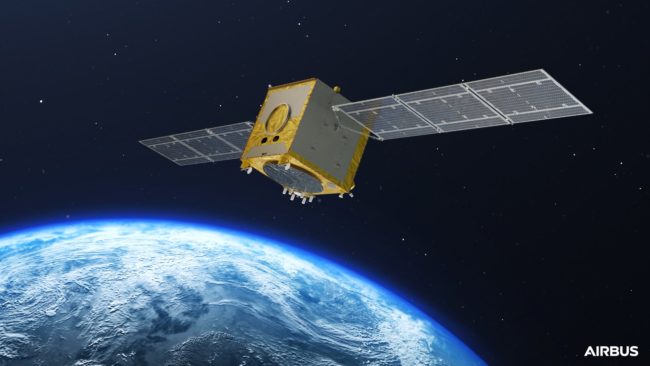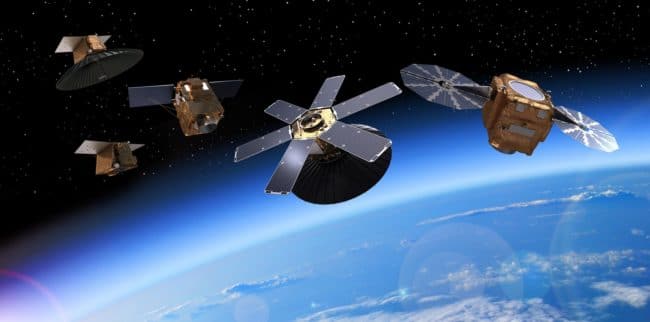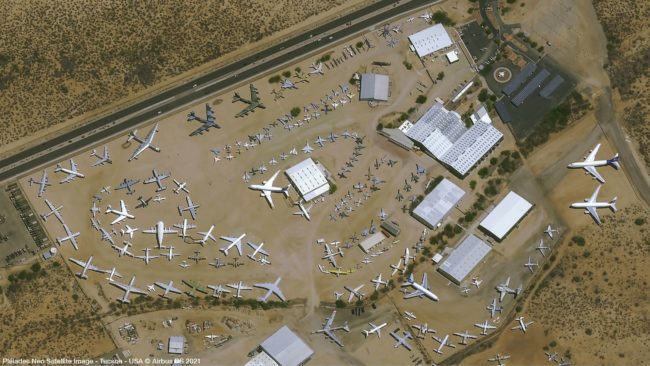24 hours at Airbus Defense & Space, in the midst of satellites, vectors of European sovereignty
(B2 in Toulouse) Europeans need their access to space to be independent from other space powers. In particular, with their own satellites. Immersion at Airbus Defense & space, a manufacturer of European satellites
We use them every day, yet we never see them. The satellites that hover above us send our emails, allow us to watch television, guide us on the roads, take pictures of the Earth... Charlotte on her head, white Airbus coat on her back, B2 has surveyed the Airbus site, in Toulouse, which manufactures these famous objects. B2 visited clean rooms for you — these enclosed spaces limiting the amount of contaminants inside — where European satellites and their equipment are built, tested and assembled.
All with the phone in airplane mode left outside... Here, we don't joke about safety and hygiene. Satellites and their equipment are highly protected, for industrial security and sovereignty issues. Once assembled and ready, they are sent into space, and it is therefore impossible to repair them if they break down... It is also therefore forbidden to write with a gray pencil, the graphite tip entering in contact with the paper could create dust... and damage the equipment.

big cameras
First stop, the optical equipment integration room. Another name for huge cameras put on satellites to observe the Earth from space. They are used to monitor disasters, detect crop water shortages, track weather changes, or map an area. In civilian use, the resolution is 30 cm (with the latest Pléiade neo from Airbus), and even lower for the military... The future and innovation do not stop at the size of the resolution. At Airbus, we particularly want to work on video, the agility of the devices, the number of spectral bands (Airbus already makes instruments that can decipher 13 different spectral bands on the same satellite).
Here, the main challenge is to integrate all the equipment with perfect precision. A satellite has one side in the shade, another in the sun, one side under +150 and the other at -120 degrees celsius. Like a railroad that swells in the scorching summer heat, imagine the impact of heat on a satellite — and the degree of perfection needed to avoid disaster.

The eyes and feet of the observation satellite
Perfection is not left out in the rest of our journey. In a nearby building, strategic equipment is hidden, mainly dedicated to Observation (1), as in the photo above. From their nicknames: gyroscopes, gyroscopic actuator (CMG). Clearly, these are the eyes and feet of the satellites. Between two luminous panels ready to alert: "danger of asphyxiation" and "immediate evacuation", the Airbus teams therefore manufacture these little things with such an important role.
L'gyroscopic actuator (CMG) is the feet. He directs the observation satellite (therefore up to three tons, remember that there is no air in space), to take pictures as he wishes.
The eyes take the form of gyroscope. He knows how the satellite is oriented. We all have them on us, they are present in our smartphones to rotate the screens in landscape / portrait format – except that the one developed in Toulouse is about 100.000 times more precise. Even more precise, in a corner of the room, a military gyroscope. It is " most accurate in the world we brag at Airbus (No, we don't have the right to know what that means). To imagine the precision of the thing, in the gyroscope there are fiber optic wires. In the civilian gyroscope it's about 200 meters of fiber, in the military gyroscope it's 4 kilometers of coiled fiber — the work takes a whole month.
And when the satellite gets lost, it uses a solar sensor, this small box the size of your hand, which will put the satellite back on the right track.
It's assessment time!
Obligatory passage for gyros and CMG: the tests. Whole hours in boxes that turn and return in all directions, to measure the actuator, the positioning in space. Performance here is measured by precision. The CMG is so sensitive that air conditioning or a passing train will cause the table to shake and the actuator to move, and the gyroscope to register movement. To avoid this kind of problem, the test table is planned accordingly: it is made of marble, weighs several tons, placed on an anti-seismic plate and separated from the building, cast deeper in the Earth. In terms of innovation of gyros and CMG, one path in particular is sought: to be even more efficient, more reliable and precise...
15 days to map North Korea
Within Airbus Defense & Space there is a department of business intelligence, or a satellite image analysis supply service. Satellite images are nice to see, but without analysis they can look a bit useless.

The mission: prepare to respond to different threats. For example, an invasion or a war: the military may need images very quickly and therefore have access to civilian images — Airbus has contracts with the Directorate General for Armaments (DGA) and the Directorate of Military Intelligence (DRM) . Faced with terrorism, armies also need to cover the terrain, to make a battle management assessment, estimate the damage after a strike, check if an area is inhabited... For the navy, they monitor the coasts, including the ports, and observe the exchanges. Another area of interest: monitoring work in unsecured places, such as pipelines or mines. Thanks to the images, teams measure the pile of rubble, or the progress of the construction for their customers, who therefore do not have to send security personnel on site.
With its satellites, Airbus would take, for example, 4 to 5 months to map Mali, a fortnight for North Korea. Unsurprisingly, some areas have restrictions. Airbus cannot sell images below one meter of resolution in French sensitive areas (for example, when we see French operational areas or French military bodies).
Assembly & testing
Last step: assembly and testing. It's the hour of truth for the satellites. The panels are deployed, then they pass radio frequency tests, resistance to extreme temperatures... It's also time to realize the difference in size between a telecommunications satellite in geostationary orbit, which is the size two or three buses placed end to end, and a small constellation observation satellite, which is the size of a refrigerator.
To continue your journey in space, read our 24 hours with Ariane.
(Aurelie Pugnet)
(1) CMGs are mainly used for observation satellites in low orbit (low earth orbit, LEO). Telecom satellites in geostationary orbit (GTO) work more with propulsion, because they do not need the same agility.
Read also:
